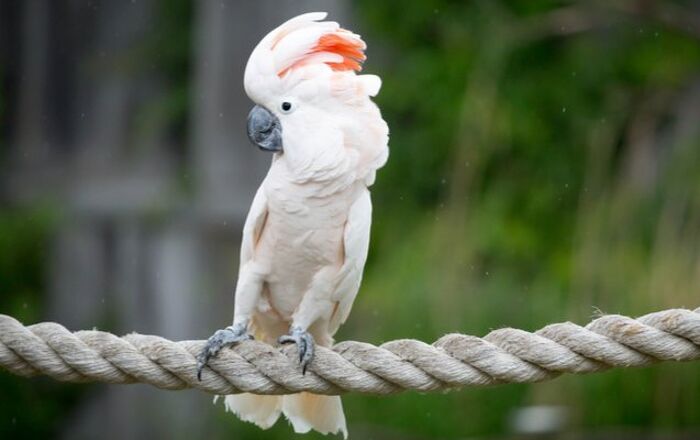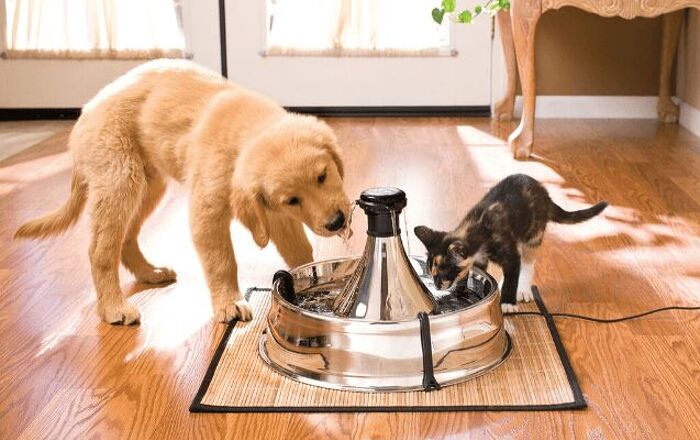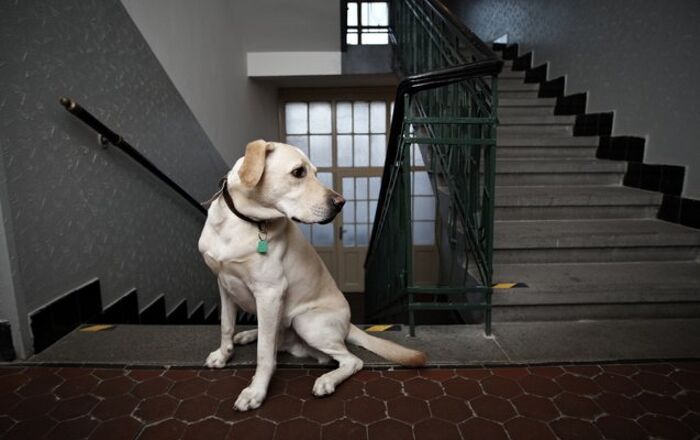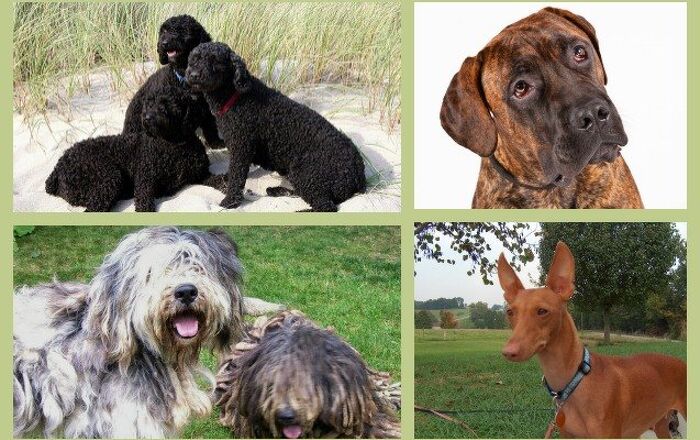Commonly known as the Chipaniel or Chi-Spaniel, this hybrid breed makes a great pet for families of all shapes and sizes.
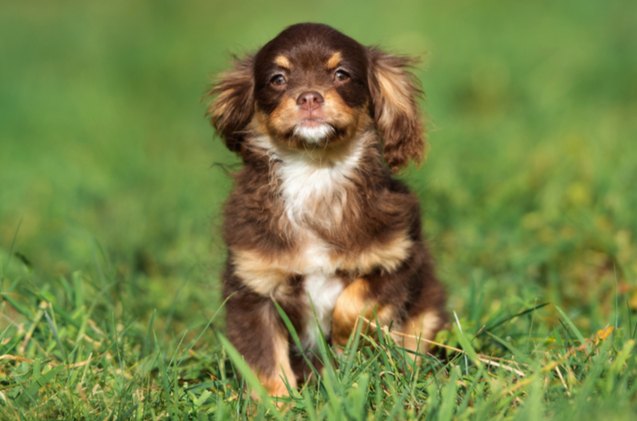
Combining the quirky and goofy nature of the tiny Chihuahua, with the charming looks and the affectionate character of the Cocker Spaniel, this designer dog breed is truly one of a kind. Commonly known as the Chipaniel or Chi-Spaniel, the breed really has some fantastic character traits that make them great pets.
Intelligent, spirited, and friendly, the Chipaniel makes a great pet for families of all shapes and sizes – whether you’re a single owner looking for companionship, a couple with kids that wants a four-legged friend for their children to grow up with, or a senior that wants a sweet, easy-going dog, this hybrid breed will be a good match.
Both the Chihuahua and the Cocker Spaniel are two famed and rather old breeds. The Chihuahua, of course, is well known to everyone. It is named after the Chihuahua State of Mexico, and its origins are said to lie in ancient history – these pups were bred by the Aztecs! Sadly, they were bred as a food source by all accounts. Luckily, things are different today, and the Chihuahuas are loved as goofy and affectionate pet dogs. On the other hand, the Cocker Spaniel is just a tad bit younger, likely originating in 15th century Europe. These dogs were bred for hunting purposes, mainly for retrieving game. Either way, they quickly became loved across the world as pets – who are not only affectionate but very charming as well.
The Chipaniel, as we can see, has quite an exquisite parentage. But, it is not nearly as old as its parents: the Chipaniel most likely originated in the 1990s in North America. Around this time, the movement centered on designer breeds was in full swing, and all sorts of breed combinations were created. But no matter how young this breed is, it has had a stellar journey thus far, being loved and liked all across the world.
As is the case with many crossbreeds, the Chipaniel doesn’t have official pedigree papers or a breed standard. A lot depends on the parent breeds, and breeders are often clueless as to how the litter of puppies will turn out looks-wise. Nevertheless, there are a number of aspects that are usually the same. For example, the ears are almost always floppy – a trait inherited from the Cocker Spaniel. However, when observing the snout, we can see that it isn’t always the same: sometimes it is elongated, and sometimes short and stubby. Height is somewhere between 12 and 16 inches on average, while the weight does not exceed 18 pounds.
As for the coat and its colors, things vary. Most Chipaniels will have a silky coat of moderate length, with a range of colors that are present in both parent breeds. However, there are some Chipaniels with smooth, short-length coats as well. In the end, be ready to expect a variety of looks!
Proper nutrition is essential for all dogs – no matter the breed. It is one of the highest priorities of any caring owner, so don’t overlook your Chipaniel’s diet. Being a small-sized dog with plenty of energy, the Chipaniel will need to replenish that lost energy in an adequate way. Due to this, it is advised to find a high-quality food that is rich in protein – quality meat should be the first ingredient in the formula. Stick to recommended portion sizes for their weight, and preferably divide their daily portion into two meals per day. Avoid feeding your pet any leftovers from the table, or generic food that is not designed for them. This can lead to obesity and a host of other problems.
Overfeeding is definitely a big issue for Chipaniel. These dogs can have rather short legs and can gain weight fairly easily. That’s why you need to ensure they get plenty of exercise and a healthy and nutritious diet. It’s a sure way to keep your dog healthy!
When it comes to training, you may find that the Chipaniel can be a challenging pupil. This is mainly due to its parentage. The Chihuahua, as we all know, can be quite a stubborn and willful little dog. And on the other hand, the Cocker Spaniel is willing to learn, easy to please, and responds well to commands. As such, the Chipaniel can have a bit of both sides. Either way, training shouldn’t be all that difficult. With a bit of patience, plenty of treats, and a good, assertive approach, you should succeed in your training goals.
Remember that a firm attitude and persistence will give you quick results. Your Chipaniel needs to know who’s the boss, but don’t overlook the benefits of a positive reinforcement method. Reward your pet for every task completed, and every job well done. This gives them a great initiative to continue with great results and makes the training process all the simpler. And after you pierce through that initial stubbornness that the Chipaniel might display, things only get easier.
Considered a small dog breed, the Chipaniel’s weight will range between 6 and 18 pounds on average. The males tend to be a tad bit larger than the females. Their weight and size combined make them suitable as pets for a variety of households. The Chipaniel can be a great dog for owners living in urban conditions, in apartments, and even in tiny homes. Just make sure that they have plenty of free space of their own, and that they are not constrained in any way.
Of course, the best choice would be a spacious home, with a fenced-in yard to boot. Every pet can thrive in such an environment, especially when surrounded by a loving family. But nevertheless, Chipaniel remains one of the most flexible dog breeds around, being suited to almost all living accommodations.
The Chipaniel has a fantastic mix of character traits that makes them easy to love and a devoted friend for many years. These dogs are affectionate, goofy, playful, and super loyal. They are also intelligent and quick to learn. As such, they are dogs that are easy to love and great fun to be around. Needless to say, the Chipaniel has a lot to offer to any owner, especially to families. These loving dogs will develop a strong bond with their owner and their family, and can even display protective traits at times. A family with children and tons of love can be the ideal setting for these pooches.
Of course, there can be a bit of stubbornness in a Chipaniel, as well as a bit of aloofness. These are common traits inherited from both parent breeds, but only in a small measure. To make sure that your pet’s character is fully formed in the best way possible, practice early socialization and begin training from the puppy years. This helps lay down solid foundations for their loveable character to bloom.
Even though generally considered a healthy and robust dog, the Chipaniel is still at risk for some genetic illnesses that can be inherited from parent breeds. For the Chipaniel, these can be hip dysplasia, hypoglycemia, glaucoma, overactive tear glands, and patellar luxation. Although rare, they can still occur at one point in their lives. The more common issues that are less threatening are dry and itchy skin, ear infections, allergies, and joint aches.
Naturally, all of these can be dealt with when caught on time, so don’t worry all that much. Just don’t neglect your pet and provide regular visits to the vet in order to monitor your pet’s health and make sure all is as it should be. When given plenty of care and provided with a healthy lifestyle, a Chipaniel should be a dog of solid health.
The average lifespan of the Chipaniel can range between 12 and 15 years on average. This is quite similar to the life expectancies of both parent breeds and is considered to be an average lifespan for a dog of their size.
However, you cannot expect that they reach 15 years of age all on their own. You will have to make an effort as well! Your pet depends on you for care, affection, exercise, and diet, all of which are very important for their wellbeing. Take care of your pet’s needs to help them reach golden years with minimal or no health issues.
The Chipaniel is an energetic and spunky dog, just like its parent breeds are. There is just so much energy stored in these little dogs that you can be surprised at times. Of course, this requires plenty of time reserved for exercising, such as daily walks, plays in the park, or even obstacle course games. Make sure that your daily routine permits at least 60 to 90 minutes spent on exercising your pet before committing to a Chipaniel. While they still do leave some time for snoozing and sitting on your lap, these dogs are still very much active throughout the day.
Still, plenty can differ from dog to dog. Some Chipaniels will love to zoom about, but others will be content with a certain amount of exercise per day. It all boils down to knowing your pet and establishing a daily routine together. Once your Chipaniel gets used to that routine, things will be simpler and smoother.
The Chipaniel is still a relatively new designer breed, and, not unlike all crossbreeds, isn’t recognized by the official canine clubs such as the American Kennel Club (AKC). However, it is recognized by the Designer Breed Registry (DBR) and International Designer Canine Registry® (IDCR), smaller organizations that are more inclusive and dedicated to designer breeds such as the Chipaniel.
Just like its parent breed of Cocker Spaniel, the Chipaniel too can have a somewhat long and flowing coat. These dogs are moderate shedders and will require a reasonable amount of grooming weekly. It is best to establish a routine that allows you to brush them twice per week, and also to take them to the groomers at least once per month. That way you will prevent matting, excess loose hair, and will maintain your Chipaniel’s prime stylish looks.
One thing to look after when grooming your pet is their floppy ears. Be careful when cleaning them, and when trimming the excess hair in the ears. This is important to do, as it helps prevent ear infections. You should also bathe them once per month or according to your vet’s instructions, in order to help prevent dry and itchy skin.
Chipaniel’s coat colors are shared with both its parent breeds, and can range from brown, tan, golden, multi-color, and black.
Chipaniel puppies are such cute little creatures – and the litter sizes range from 3 to 10 puppies, so you can bet each litter will be as diverse as it gets. Goofy, inquisitive, and full of energy, they might be a handful initially. But it is important to get them on the right track straight away, so start with training and socialization early on. Of course, in those early first days you want to avoid large crowds and eager hands, as they can stress a puppy out and potentially harm them. The first few weeks are reserved for calm and patient care until the puppy begins to grow. Once your puppy reaches 8 weeks, you can start with the very basic socialization and training (teaching sit and stay). The formal training is usually done at 6 months of age.
